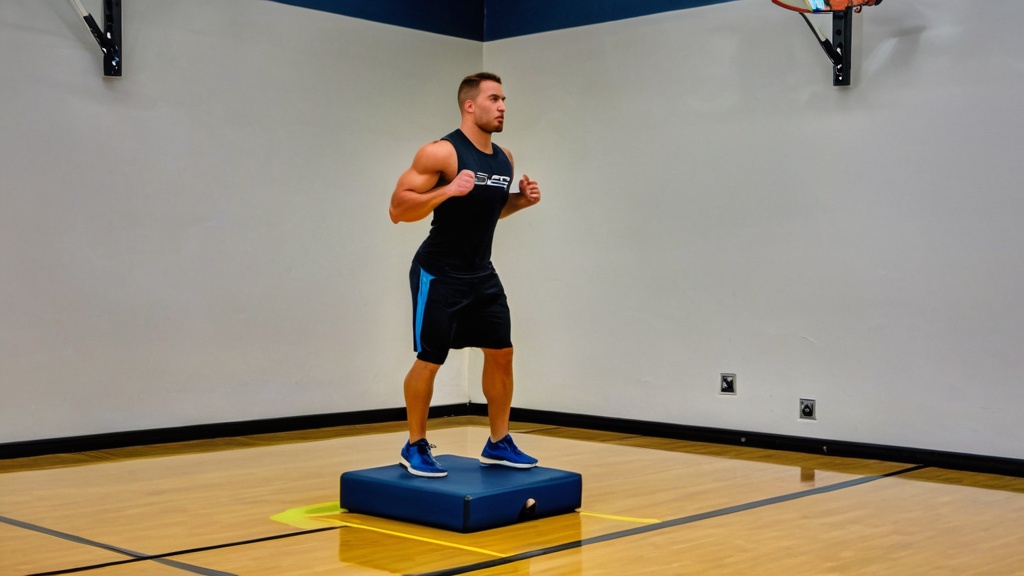Plyometric training has gained popularity among athletes, especially sprinters. This training method focuses on explosive movements that enhance speed and power. Sprinters can significantly improve their performance through targeted plyometric exercises.
Plyometrics involve quick, powerful bursts of movement. These exercises help develop fast-twitch muscle fibers, crucial for sprinting. By incorporating plyometric drills, sprinters can achieve better acceleration and overall speed.
Key Takeaways
- Plyometric training enhances sprint speed by improving explosive power and muscle elasticity.
- Key plyometric exercises for sprinters include box jumps, depth jumps, tuck jumps, split squat jumps, and lateral bounds.
- Scientific principles behind plyometrics focus on the stretch-shortening cycle to maximize force production.
- Incorporating plyometric drills into sprint training programs boosts lower body strength and overall sprint performance.
- A structured plyometric training program is essential for safely integrating these drills and achieving optimal sprinting results.
Benefits of Plyometric Drills for Sprint Speed
Plyometric drills offer numerous benefits for sprinters. They improve muscle elasticity and strength, which translates to faster sprinting times. Enhanced power output allows athletes to push off the ground more effectively.
Additionally, plyometrics increase coordination and balance. These skills are vital for maintaining form during high-speed runs. Improved neuromuscular efficiency also leads to better overall athletic performance.
The Science Behind Plyometric Training for Sprinters

The science behind plyometric training lies in its effect on the stretch-shortening cycle. This cycle involves a rapid stretch of muscles followed by a quick contraction. This process generates more force and power during explosive movements.
Research shows that plyometric training enhances muscle recruitment and firing rates. This leads to improved speed and agility in sprinters. The combination of strength and speed training creates a powerful foundation for athletic success.
Plyometric Drills for Lower Body Strength and Power
Lower body strength is essential for sprinters, and plyometric drills target this area effectively. Exercises like box jumps and depth jumps build explosive power in the legs. Stronger leg muscles contribute to faster sprinting speeds.
Incorporating various plyometric drills into a training regimen can enhance lower body strength. These drills engage multiple muscle groups, promoting overall athletic development. As a result, sprinters can achieve better performance on the track.
Best Plyometric Exercises for Sprinters: Box Jumps
Box jumps are a staple in plyometric training for sprinters. This exercise requires athletes to jump onto a sturdy platform or box. Box jumps develop explosive leg power and improve vertical leap.
To perform box jumps correctly, maintain proper form throughout the movement. Start with feet shoulder-width apart and bend your knees slightly. Jump explosively onto the box, landing softly with knees slightly bent.
Best Plyometric Exercises for Sprinters: Depth Jumps

Depth jumps are another effective plyometric exercise for sprinters. This drill involves stepping off a box and immediately jumping upon landing. Depth jumps enhance reactive strength and improve overall explosiveness.
Athletes should focus on minimizing ground contact time during depth jumps. Quick reactions lead to better power output when sprinting. Incorporating depth jumps into training can yield significant performance improvements.
Best Plyometric Exercises for Sprinters: Tuck Jumps
Tuck jumps are excellent for developing explosive leg strength and coordination. In this exercise, athletes jump vertically while bringing their knees toward their chest. Tuck jumps enhance both power and agility, crucial for sprinters.
To perform tuck jumps effectively, maintain an upright posture throughout the movement. Focus on landing softly to reduce impact on the joints. Regular practice of tuck jumps can lead to noticeable improvements in sprinting performance.
Best Plyometric Exercises for Sprinters: Split Squat Jumps
Split squat jumps target the legs while improving balance and coordination. This exercise involves a lunge position followed by an explosive jump upward. Split squat jumps build strength in both legs, enhancing overall sprinting ability.
To execute split squat jumps correctly, start in a lunge position with one foot forward.
Push off explosively, switching legs mid-air before landing in a lunge position again.
Consistent practice of this drill can lead to increased power and speed.
Best Plyometric Exercises for Sprinters: Lateral Bounds
Lateral bounds focus on lateral movement, which is essential for sprinters. This exercise involves jumping side-to-side while maintaining balance and control. Lateral bounds improve agility and stability during sprints.
To perform lateral bounds effectively, start by standing on one leg. Jump sideways to land on the opposite leg, absorbing the impact with your knee slightly bent. This drill enhances lateral strength, contributing to better sprinting performance.
Plyometric Training Program for Sprinters
Creating a structured plyometric training program is crucial for sprinters. A well-designed program should include various exercises targeting different muscle groups. Incorporate box jumps, depth jumps, tuck jumps, split squat jumps, and lateral bounds into your routine.
Start with two to three sessions per week, allowing adequate recovery time between workouts. Gradually increase intensity and volume as your strength improves. Consistency is key to achieving optimal results from plyometric training.
Conclusion and Integration of Plyometric Drills into Sprint Training
Integrating plyometric drills into sprint training can yield significant benefits for athletes. These exercises enhance speed, power, and overall performance on the track. By focusing on explosive movements, sprinters can develop the necessary skills to excel in their sport.
Incorporate a variety of plyometric exercises into your training regimen for maximum effectiveness. Monitor progress and adjust your program as needed to ensure continued improvement. With dedication and consistency, sprinters can unlock their full potential through plyometric training.

